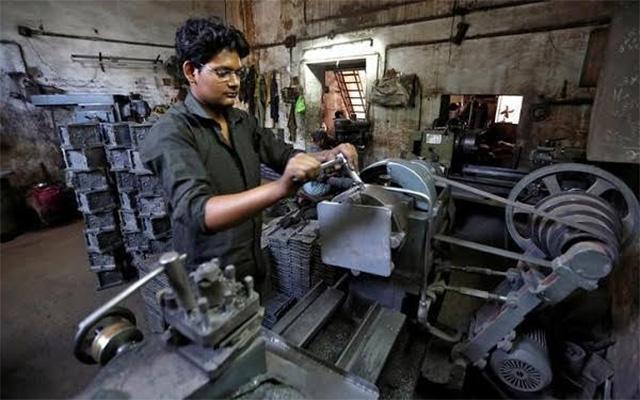India’s economy unexpectedly grew 7% in the October-December quarter of 2016, indicating that the impact of the shock ban on high-value banknotes in November wasn’t as adverse as initially feared.
Still, growth in gross domestic product for the third quarter of the current fiscal year is slower than the revised 7.4% pace for the July-September period, the Central Statistics Office (CSO) said on Tuesday.
The CSO also retained its forecast of GDP growth for 2016-17 at 7.1% in its second advance estimates from 7.9% in 2015-16, enough to maintain India’s position as the fastest-expanding major economy in the world.
“These estimates capture all the data available with us,†chief statistician of India TCA Anant told reporters. He added that the CSO has taken into account industrial production figures and data from companies in its estimates.
“You may interpret the estimates in whichever way you like,†Anant said when asked if demonetisation didn’t impact the economy as much as most economists had projected.
Prime Minister Narendra Modi scrapped Rs 500 and Rs 1,000 notes in November to fight graft and tax evasion. But the move to suck out 86% of the currency in circulation caused a cash crunch and hurt economic activity. This prompted several economists, ratings firms and the International Monetary Fund to trim their growth forecasts to as low as 6.5%.
Economists were divided in their response to the latest set of data. Aneesh Srivastava, chief investment officer at IDBI Federal Life Insurance Co., said the data perhaps didn’t capture the impact of demonetisation. “I believe that, with a lag, we will see an impact on GDP numbers.â€
However, Care Ratings chief economist Madan Sabnavis said he has no reason to doubt these numbers. “I would like to believe that the impact of demonetisation has been factored in. Going forward, I think the numbers would stabilise and move up.â€
Economic affairs secretary Shaktikanta Das said this year’s growth figures are on a high base of last fiscal year and that numbers “do not show much negative impact of demonetisationâ€.
The CSO also said that it anticipates growth in real GVA (gross value added—a measure of goods and services produced in an area) at basic prices in 2016-17 at 6.7%, down from 7.8% in 2015-16.
The data back the Reserve Bank of India’s assessment that the economic disruption caused by the note ban will be temporary. The RBI had projected the economy would grow 6.9% this fiscal year. However, the finance ministry’s Economic Survey had estimated that the growth rate this fiscal year could fall to as low as 6.5%.
The CSO also said that the sectors which are likely to register 7% growth in 2016-17 are public administration, defence, manufacturing, trade, hotels, transport, communication and broadcasting-related services. Agriculture, forestry and fishing are likely to show 4.4% growth compared with 0.8% in 2015-16.
“Production growth of food grains during the kharif and rabi seasons of agriculture year 2016-17 was 9.9% and 6.3%, respectively, compared to a decline of 2.3% and growth of 2%, respectively, in the previous agriculture year,†Anant said.
Meanwhile, industry body Assocham demanded more government investments to boost growth. “Policymakers should take steps to revive fixed investments and production of capital goods which are falling continuously since the growth supported by consumption demand does not have sustainable impact,†said Assocham president Sandeep Jajodia.
Like this report? Sign up for our daily newsletter to get our top reports.






